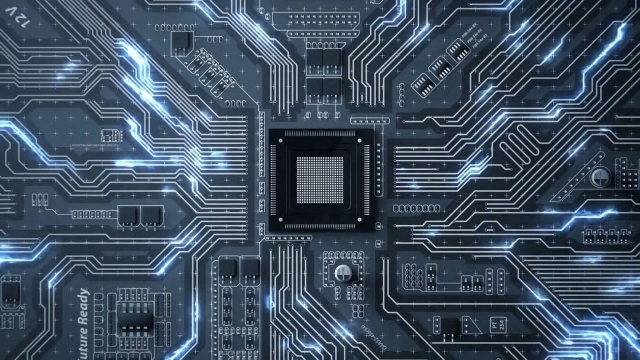
Delving Into the Digital Doppelgangers: Unraveling the Wonders of Deepfake Technology

Deepfake technology has taken the world by storm, raising eyebrows and captivating imaginations with its ability to blur the lines between reality and fiction. In an era where digital advancements continually push the boundaries of what is possible, deepfakes have emerged as both a source of wonder and concern. But what exactly are deepfakes, and how do they work? In this article, we will delve into the depths of this fascinating technology, unraveling its mechanics and exploring the myriad of possibilities it presents. So buckle up, dear readers, as we embark on a journey into the mesmerizing world of deepfakes.
Understanding Deepfake Technology
Deepfake technology is a groundbreaking development in the world of digital media. It allows for the creation of incredibly realistic videos and images that can deceive even the most discerning eye. By employing advanced machine learning algorithms, deepfake technology seamlessly combines and superimposes existing footage onto new contexts, resulting in astonishingly convincing fake content.
The key behind deepfake technology lies in its ability to analyze and reproduce human behavior. By training on vast amounts of data, such as facial expressions, movements, and voice patterns, the algorithms learn to mimic the targeted individual with remarkable precision. This enables the creation of videos where someone’s face is convincingly swapped onto another person’s body, making it seem as though the person is saying or doing things they never actually did.
While the potential applications of deepfake technology are vast, there are also concerns regarding its misuse. Deepfakes have the potential to be used in malicious ways, such as spreading misinformation, blackmailing individuals, or generating fabricated evidence. As a result, it is crucial to develop robust detection methods and raise awareness about the existence of deepfakes to mitigate their negative impact.
In summary, deepfake technology is a powerful tool that has the ability to manipulate digital content in unprecedented ways. By leveraging machine learning, it can create incredibly realistic videos and images that can be both awe-inspiring and concerning. As we continue to delve into the wonders of deepfake technology, it is vital that we maintain a critical mindset and remain vigilant against its potential misuse.
The Dangers and Ethical Concerns
Deepfake technology presents various dangers and ethical concerns that need to be addressed. One of the primary concerns is the potential for malicious use. With this technology, anyone with access to the necessary tools and skills can create highly realistic fake videos or images. This opens up a Pandora’s box of possibilities for the spread of misinformation, propaganda, and even blackmail.
Another significant danger lies in the erosion of trust and credibility. Deepfakes have the capacity to deceive people into believing fabricated content is real, leading to misinformation and confusion. As deepfakes become more advanced and indistinguishable from authentic content, it becomes increasingly difficult to discern what is genuine and what is fake. This can have far-reaching consequences, especially in fields where trust is crucial, such as journalism, politics, and law enforcement.
Furthermore, deepfake technology encroaches upon personal privacy rights. By allowing the manipulation of someone’s likeness or voice without their consent, it raises serious concerns about consent and consent withdrawal. The potential harm caused by unauthorized use of someone’s identity in deepfake videos or images cannot be overstated, as it opens the door to harassment, reputation damage, and even identity theft.
Given these dangers and ethical concerns, it is imperative that proactive measures are taken to mitigate the risks associated with deepfake technology. This includes enhancing detection and verification techniques to help identify and flag manipulated content, as well as investing in education and awareness campaigns to equip people with the knowledge to identify and critically evaluate potentially fake media.
In conclusion, while deepfake technology undoubtedly showcases the wonders of modern-day digital manipulation, it also poses significant dangers and ethical concerns. By acknowledging and addressing these risks, we can strive for a future where the immense potential of deepfake technology is harnessed responsibly, for the benefit of society as a whole.
Implications and Future of Deepfakes
The rapid advancements in deepfake technology have raised significant concerns about its implications and potential future developments. As this technology becomes more sophisticated, it poses numerous challenges and risks to various aspects of society, including politics, privacy, and entertainment.
Deepfake
One of the primary concerns surrounding deepfakes is their potential impact on politics and elections. With the ability to manipulate videos, it becomes increasingly difficult to distinguish between real and manipulated content. This poses a significant threat to the authenticity of political discourse and the credibility of public figures. Deepfakes can be weaponized to spread misinformation and propaganda, leading to a erosion of trust and potentially influencing public opinion in detrimental ways.
Beyond politics, deepfakes also raise serious privacy concerns. As the technology progresses, individuals’ identities could be easily forged and their voices replicated convincingly. This opens the door for malicious actors to exploit people’s personal information and use it for fraudulent activities or blackmail. Moreover, the proliferation of deepfakes could lead to a loss of trust in digital media, making it harder to discern what is real and what is fabricated.
Another area impacted by deepfakes is the entertainment industry. While deepfakes offer exciting possibilities for filmmakers and broadcasters, they also raise ethical questions. With the ability to superimpose celebrity faces onto other actors, for example, the line between reality and fiction becomes blurred. This may lead to legal issues surrounding impersonation and copyright infringement.
Looking towards the future, it is crucial for policymakers, technology developers, and society as a whole to consider the potential consequences of deepfakes. Stricter regulations and safeguards will be necessary to prevent the misuse of this technology. Additionally, increased public awareness and education can help individuals better recognize and critically analyze manipulated content.
In conclusion, deepfakes have the potential to disrupt various aspects of society, from politics to privacy and entertainment. As technology continues to evolve, it is vital to address the implications responsibly and proactively. Only by staying vigilant and developing countermeasures can we mitigate the negative effects and ensure a future where deepfakes are used responsibly and ethically.



